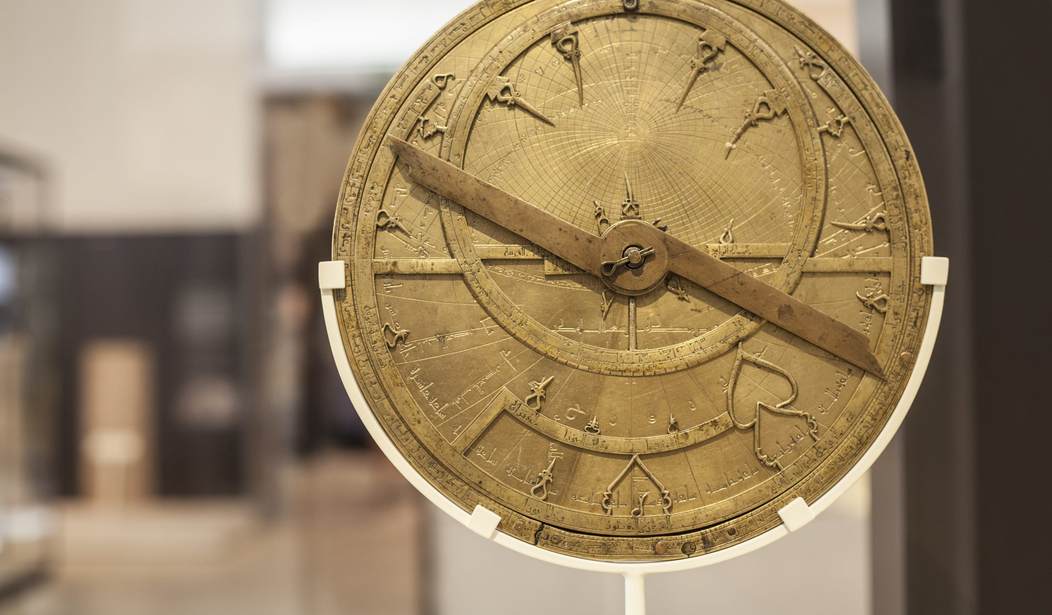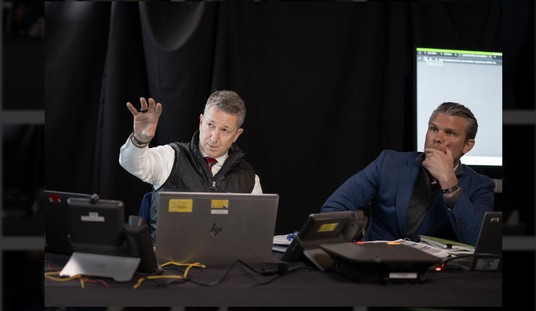On occasion I have seen a “poster” on Facebook that says something like “Islam: Contributing Nothing to Civilization for 1300 Years.” I realize that some see that meme as an attack against ISIS and other jihadists (and I support any and all attacks against the jihadist threat to our world today). However, that poster makes me angry because it simply isn’t so.
I am a Christian. I have no interest in defending the theology of Islam, but I am very interested in telling the truth. We should never be afraid of telling the truth. And just like in my previous article, where I discussed several contributions of Christian Europe to the civilized world, it is true that the Islamic culture of the medieval world made numerous contributions as well. I have cherry-picked just a few of the voluminous contributions to share with you:
1. Agriculture
If you enjoy peaches, apricots, oranges, lemons and limes, you can thank the Muslims of the Middle Ages. Their farmers brought these wonderful fruits from the Middle East and India to Spain. And soon enough the rest of Europe learned to love them! Like lemonade? Thank the Muslim culture of the medieval world. Artichokes and spinach were also introduced to Europe by the Muslims, but maybe those veggies are not as palatable. We can also thank the Muslims for cultivating and bringing to Europe rice, pepper, ginger, and cloves. Imagine Thanksgiving or Christmas without many of the spices you have available in your grocery store.
But if you love coffee … thank the Arabs and Turks. The coffee bean was first discovered by Christian Ethiopians, but other than chewing the beans or boiling the leaves, their use of the bean didn’t really make a splash (ha!). The Arabs in Yemen decided to grind the beans and boil them, thus producing what they called “qahwa” in Arabic.
https://www.youtube.com/watch?v=r3wVC1wJjwI
The Turks got wind of this new brew, further developed it (calling it “kahve”) and turned it into the gourmet liquid it is today. The first coffee shop in Europe opened in Venice Italy in 1615, thanks to Turkish merchants who brought it over.
2. Mathematics
Well, it’s been well over 30 years now since I graduated from college and I have not used algebra once. But of course, we could not have any of the marvels of modern technology we use today without algebra — a field of mathematics developed by Arab Muslims. In fact, the word “algebra” comes from the Arabic “al-jabr” meaning “restoring balance” in an equation.
Islamic mathematicians stood on the shoulders of Greek, Indian, Persian, and Chinese mathematicians, but they further developed disciplines such as geometry and created some of their own, such as trigonometry. Their scientists/physicians also developed the field of chemistry, which derives its very name from Arabic. Muhammad Al Khwarizmi (the word “algorithm” actually is a corruption of his name) was an early director of the House of Wisdom in Baghdad (an early university) and influenced the world to use the Arabic-Hindu number system we use today. Imagine trying to do multiplication or long division with the old Roman numerals! It can be done, but it’s pretty difficult. Instead, thanks to Al Khwarizmi we use the easier numbers of 1 through 9, including zero! Seems so obvious to us today, but it was quite a game-changer in the medieval world.
3. Medicine
Here Christian Europe and the rest of the world owes a huge debt of gratitude to the Muslim physicians who not only pioneered new techniques, but shared their knowledge with non-Muslims. By the 9th century Muslims were emulating Christians by building hospitals, and their physicians were assimilating much knowledge taken from the classical works of the ancient Greeks (Galen and Hippocrates most notably).
Al-Rhazi (c. 865-930) is probably the most famous of all Muslim physician/scientists of the Middle Ages. He was the first to diagnose that measles and smallpox are in fact two different diseases. He also accurately diagnosed the plague, diphtheria, leprosy, diabetes, and hemophilia. Al-Rhazi figured out that somehow diseases were transmitted through blood, but did not know about microbes. He also wrote a correct scientific explanation for epilepsy.
Ibn Sina (980-1037) was a Persian scientist who discovered that tuberculosis was contagious and spread through the air. In Europe he was known as “Avicenna.” He introduced quarantine methods to contain it. His writings (The Canon of Medicine and The Book of Healing) were translated into Latin and became standard textbooks in European medical colleges throughout the Medieval and Renaissance Eras.
Al-Zahrawi was a physician who around A.D. 1000 pioneered the technique of using dissolving sutures made from cat gut! Previously doctors had to do a second surgery to remove sutures. He also created new tools: the forceps, the syringe, and a surgical hook and needle.
Serapion was actually a Christian Syrian who wrote a detailed treatise about pharmacology in the 9th century. However, the Muslim Al-Dinawari followed up on this tome with a book entitled The Book of Plants, which listed numerous diseases and their remedies from plants. His book was translated into Latin and used throughout Europe.
Al-Nafis (born in 1213) corrected the Greek physician Galen’s misconception of blood circulation within the heart. Al-Nafis stated that there are no pores connecting the two halves of the heart, and blood travels by passing through the lungs. His knowledge was still incomplete, of course, but he paved the way for William Harvey’s later discovery of how blood circulates. Galen also believed that arteries pulsed on their own, however Al-Nafis correctly believed that the pulse is caused by blood being pushed through the circulatory system by the contractions in the heart.
And then there was Ibn Al-Haytham (died in 1039). He was the founder of the science of optics in the Middle Ages. He was the first to advance optical theory since the days of Ptolemy (2nd century B.C.). He wrote on refraction, reflection, binocular vision, and focusing with lenses. He was the first to propose that (contrary to Galen) vision happens when light bounces off an object and is seen in the eye.
4. Astronomy and Navigation

Antique brass astrolabe made during Arabic Middle Age rule in Spain at National Archeological Museum of Madrid
Muslim scientists throughout the medieval world were obsessed with charting the stars and planets. They wanted to know with exact precision when to celebrate the month of Ramadan and the direction of Mecca for their prayers. They inherited their knowledge of the stars from the Greeks, Persians, Indians, and the Chinese.
The Muslims built the first observatory of the Middle Ages in 825 in Baghdad. They also greatly improved the astrolabe — a breakthrough tool that enables explorers to locate positions of the sun, moon, stars, and planets. The astrolabe allows one to determine local time with latitude and longitude. The ancient Greeks had an early form of this tool, but Muslims in the 8th century added angular scales which allowed greater flexibility in navigation. Along with another tool, the quadrant, Muslim navigators became explorers of the world around them before European explorers in the 15th century.
5. Philosophy
While Islam can boast a hoard of renowned philosophers, I will mention only their “top three” from this time period. Al-Farabi (872-951) preserved the writings of Aristotle and Plato and sought to use their philosophy within the context of his own faith. His dissertations on faith and reason heavily influenced the Catholic philosopher and Dominican scholar Albertus Magnus, and his protoge’, Thomas Aquinas. Aquinas’ approach to explaining the world and his Catholic faith in Aristotelian terms owes quite a bit to Al-Farabi.
Ibn Rushd (1126-1198) is known to the Europeans as “Averroes.” He follows in the same train of Aristotelian thought by showing the compatibility of science and religion in his volume, The Decisive Treatise. He had a much greater impact on philosophy in Christian Europe than in his own Islamic culture. Because of his stance on the importance of reason he is sometimes called the “Father of Secular Thought” in western civilization.
Finally, Ibn Khaldun (1332-1406) was the first social scientist. This man was a philosopher and historian. But he was also quite a writer, who wrote much on economic and political theory. His book, Kitab al ‘Ibar (Book of Lessons), was originally about the Berbers of North Africa. As he continued to write, it grew into a work pretty much about the whole civilized world. One theory of his stands out. He believed that when a society becomes a great civilization its high point is followed by decay. He believed that desert tribes/nomads were vigorous people, but when they became sedentary and “civilized” they declined in power and would be replaced by more vigorous “barbarian” people.
I could go on and on. The history of the Medieval Era is filled with all kinds of discoveries, inventions, mass movements, alliances, betrayals, and conquests … by Christian, Muslim, and Pagan cultures. Its revolutions set the stage for the “civilized” world we now live in. I often see our current world (mistakes and victories) in that world that once was. And that is why it is such a fascinating time period to explore.









Join the conversation as a VIP Member